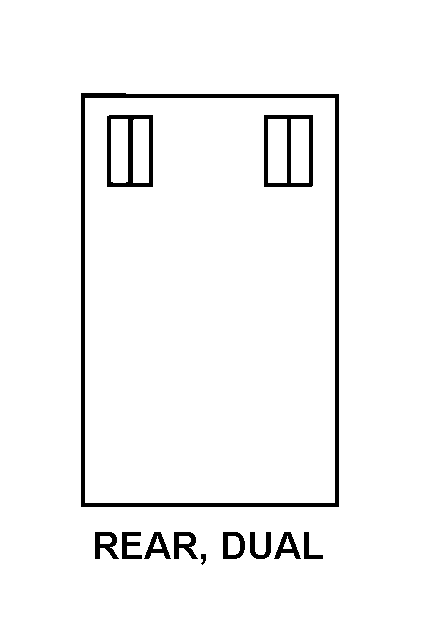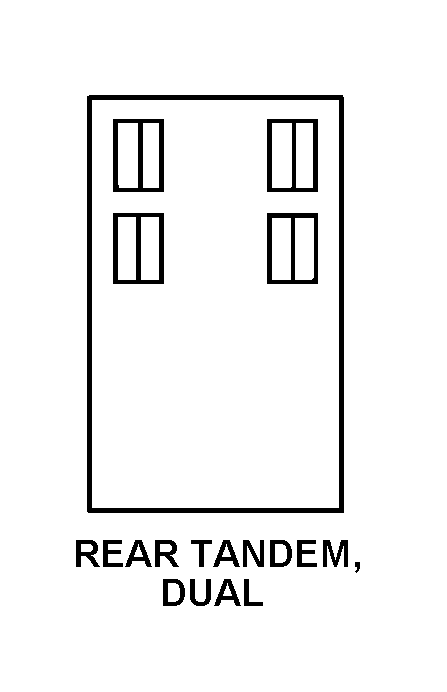2330009650967
Price Quote Get an up to date pricing and availability quote for this product. Order online or over the phone.
Quality Commitment
Serving our customers with quality and safety first.
- AS9120 Certified
- Audited supply chain
- ITAR Registered
- DDTC Registered
- HAZMAT Certified
- Customer service objectives
- Every product 100% inspected

2330-00-965-0967 Specification Set by the OEM (see RNCC code 3)
wood and steel
367.000in. ⁓367-1/64"
149.000in.
96.000in.
93.000in.
360.000in.
91.750in.
not included
flat
manual
not included
12.000 tons
rear tandem, dual
24.000in.
not included
not included
through shaft axle
not included
included
fifth wheel upper plate w/kingpin
not included
air
not included
2 rear end
straight
not included
name, bpqw, and model year 1964
Cross Reference Parts Part numbers that meet the specification outlined on this page and set by the OEM
Identification Item Identification Guide (IIG) and Item Name Code (INC)



Definition Definition of approved item name (AIN): "SEMITRAILER,VAN"
A semitrailer with an inclosed body which may be insulated, designed to protect cargo and equipment from the elements and pilferage and/or to provide working and/or living quarters for personnel. Excludes van type semitrailers equipped for specific functions.
Related NSNs
Indicates that the item represented by the nsn in the input/output header is the (physical) item of production in an i&s generic relationship. (the generic master nsn appears in the segment h.) must be used in combination with phrase code s.
Relationship Codes
OOU: Order of Use. Three position alpha code denoting the interchangeability and substitutability (I&S) relationship of a national stock number within a service/agency I&S family.
JTC: Jump to Code. Three position alpha code that denotes an exception to the normal sequence to be followed in the attrition of items within an interchangeability and substitutability (I&S) family.
Phrase Code: A one position code assigned to a phrase used in the management data list to denote changes and/or relationships between national stock numbers and reference data.
2330-00-965-0967 Material Hazmat, Precious Metals, Criticality, Enviroment, and ESD
Indicates there is no data in the hmirs and the nsn is in a fsc not generally suspected of containing hazardous materials.
Precious metal content is unknown
The item does not have a critical feature such as tolerance, fit restrictions or application. nuclear hardness properties have not been determined (not valid for input).
Identification Codes
HMIC: Hazardous Material Indicator Code. A one position code that identifies a hazardous item.
PMIC: Precious Metal Indicator Code. A one position code which identifies items that have precious metals as part of their content. precious metals are those metals generally considered to be uncommon, highly valuable, and relatively superior in certain properties such as resistance to corrosion and electrical conductivity.
ESD: Electrostatic Discharge. Indicates if an item is susceptible to electrostatic discharge or electromagnetic interference damage. electrostatic discharge damage occurs when an accumulation of static electricity generated by the relative motion or separation of materials is released to another item by direct contact. electromagnetic interference damage occurs when an item comes into proximity with an electrostatic or magnetic field.
ENAC: Enviromental Attribute Code. Identifies items with environmentally preferred characteristics.
CRITL: Criticality Indicator Code. Indicates an item is technically critical by tolerance, fit, application, nuclear hardness properties, or other characteristics.
Material Management Material categorization and source of supply
Us army tank-automotive and armaments command warren, mi 48397-5000
Material Codes
SOS: Source of Supply. A three position code or routing identifier code (ric), which identifies the source of supply activity.
SMIC: Special Material Indicator Code. A two position code, which categorizes material on the basis of requirements for source or quality control, technical design or configuration control, procurement, stocking and issue control, special receipt, inspection, testing, storage, or handling.
MMAC: Material Management Aggregation Code. A two position code that identifies an item of supply to be managed by a specific activity manager.
MCC: Material Echelon Code. A two position code employed by the marine corps in classifying items into categories by materiel category and procurement echelon. the alphanumeric management code is in the first position and identifies the materiel category
IMC: Denotes wether items shall be subjected to integrated management under the defense supply agency or retained by the individual military service or other department of defense components for their management. Assigned by th activity responsible for item management coding.






